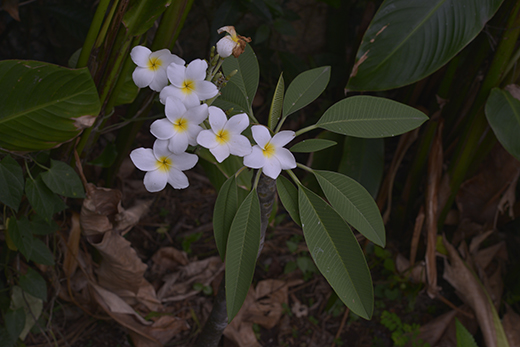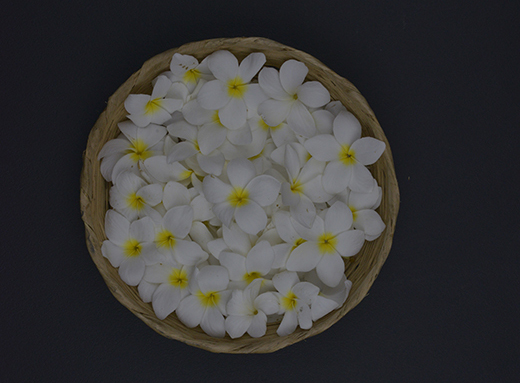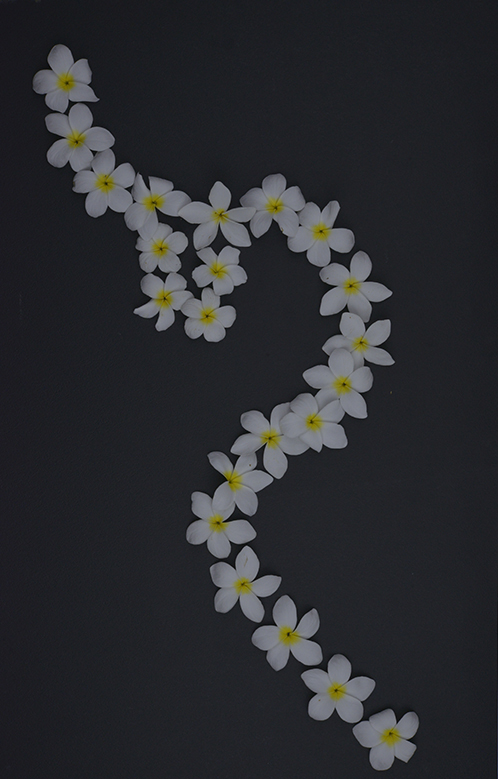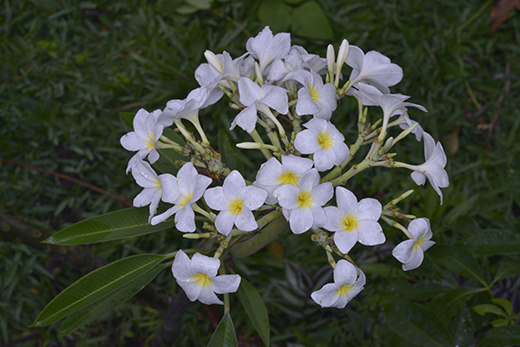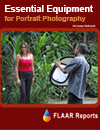Each individual photographer will have their own style, or their own goals which may pre-determine which lighting style to select. Options include:
Daylight (Outside) ideas
- Sunlight
- Overcast (cloudy sky), using also ring flash
- Overcast, using also macro flash
Studio lighting options
- Strobes (Elinchrom is a good brand)
- Camera-related flash: ring flash (Metz is a good brand)
- Camera-related flash: macro flash
- Tungsten-halogen (Lowel is the brand we have used for decades)
- Fluorescent (FJ Westcott is the brand we have used for over 8 years)
There are about three or four other lighting technologies; some are for special purposes. We at FLAAR photographed Maya ceramic and stone sculptural art for over 30 years (at museums around the world). We used Lowell Tota-light 90% of the time and DedoLights about 10%.
For the past six years we have been photographing primarily plants and animals (including reptiles, amphibians, birds, snakes, spiders): the Neotropical area of the world is filled with great creatures to photograph). We photograph primarily in Guatemala, sometimes in Honduras, and occasionally in El Salvador.
We have found the soft aspect of fluorescent lighting ideal for flowers. However occasionally it would also be nice to have more directional lighting for something the size of a flower, so we have always been tempted by Lowel Scandles. But since we do not have any Lowel Scandles, we use exclusively Westcott Spiderlite TD5, a set of four. We would be interested in testing Westcott Spiderlite TD6.
Reviews of Westcott Spiderlite TD5
Here is a photograph taken outside with an after-market ring-flash, Nikon D800E, Gitzo tripod, at night, Guatemala, Central America, 1500 meters elevation, mid-May 2014.
Here is a photograph taken the same night, inside, with studio lighting: fluorescent lighting, Spiderlite TD5 from FJ Westcott.
Here is a photograph taken with Westcott Spiderlite TD5 and ring-flash.
Westcott lighting is a lot safer for using because you don’t burn your hands when you touch them. And fluorescent light bulbs don’t tend to explode as can tungsten halogen lamps.
Now, since a year or so, there are new models of Westcott (we have only the old models). You can see the new models on www.fjWestcott.com
Westcott Spiderlite fluorescent studio lighting can also be used outside
We take the Westcott Spiderlites outside since there are many portable batteries which can power them (the same batteries used to power a computer out in a remote location).
Would be impossible to provide enough portable power to run tungsten-halogen lighting out in a remote location unless you have a noisy portable electric generator (and then you have vibration and exhaust fumes).
Of course if you are a profitable money-making commercial company you would have many options for bringing entire electrical plants out on location! But our project does not float on money so we have to be realistic, and Westcott fluorescent lights work fine out on location precisely because they do not need to gobble up tons of electrical power.
In Guatemala we are interested in photographing
- All the sacred flowers of Mayan people
- flowers of all the medicinal plants (over 150 species)
- Flowers of all the plants which provide dye colorant (to color clothing)
- Flowers of all the plants used for flavoring cacao
- Flowers which are edible
- Leaves which are edible
- Roots which are edible
Plus we are studying all utilitarian plants of the Maya; many of these same plants were used by the later Aztec. Some are still used today throughout Mesoamerica. To identify which species you are looking at you need to see the flower (in addition to the leaves).
Since many of these flowers are of remarkable size, shape, or color, we have memorable opportunities. Presently the FLAAR Photo Archive of Mayan plants is the largest such high-resolution photo archive in the world.
Since our goal is not merely to photograph the flowers, our goal is to achieve a previously unreached level of sophisticated lighting combined with high resolution. In other words, we strive to take the absolute best photographs of these flowers possible (since the jungles are being bulldozed to extinction to plant money-making products from other countries: teak, Brazilian rubber, coffee, African oil palm, or simply obliterating the forest to create open grazing land for cattle (to supply hamburgers for McDonalds and steaks for other restaurants).
In order to take better-than-average photographs, we need
- Sturdy tripod (we prefer Gitzo)
- Good tripod head (we still use the same Arca-Swiss head for 30+ years)
- Cable release
- Mirror lock-up capability on the camera settings
- And good lighting
It also helps to have a few years of experience (my photographs were in National Geographic by 1978 and in a Hasselblad magazine a few years later). But actually I rarely sell my photographs nor use them for any commercial purposes. However we are looking for giclee ateliers who would be able to provide us with special camera lenses and a new medium format system (since our Hasselblad dates back to the 1980’s and our digital back had pixels wear out). A Phase One IQ260 would be the best system for us. For telephoto access to flowers high in giant jungle trees we need a 600mm prime lens for a Canon EOS; and a 500mm prime lens for our Nikon when the flowers are a tad closer. Sigma telephoto lenses are (sorry) not considered as good as Nikon or Canon telephoto lenses.
Outside, a cloudy day may be better than direct sun
For panorama views, I like good sun. For photographing trees, a blue sky is a great background.
But for photographing flowers, bright sun is not always ideal. Sometimes reds and oranges over-saturate. Oversaturation of certain colors is an issue with digital photography in general.
If there is sun, try to have the sun behind you. But sun at a sharp angle to the flower may make the petals stand out better. And sometimes I like the sun to be behind the flower, so the flower is translucent: you can see through the flower. This is especially nice if the flower has sepals (behind the petals) which make a decorative pattern. I especially like to photograph 4-petaled flowers which have four sepals. I photograph them from the front, then from the back, and with lighting from the front, and then another shot with back-lighting.
Tripods: Do you really need a tripod?
I had to smile when I saw a commercial web site saying that “you do not need a tripod if you use a flash…” Considering this web site asks for donations in exchange for buying equipment via his web site, I am pleasantly surprised he did not nudge readers to buy a tripod too!
We do not ask for, nor receive, sales commissions. Nor do we receive money from any photo equipment manufacturer. About half our equipment is provided for evaluation. Other equipment is donated by helpful benefactors (we do not tend to sell our photos since we are taking them to provide information about plants of the ancient Maya civilization; so we have no income from even our professional level of photography).
I have been a college professor of digital imaging and a research professor at two universities (in advanced digital imaging). We provide tips, help, and answers to questions because this is the nature of a professor. Thus we do appreciate the donations of studio lighting equipment, cameras, and lenses.
- And you do need a tripod if you intend to enlarge your photo for exhibit.
- You do need a tripod if you intend to do HDR lighting.
- And you definitely need a tripod AND a sturdy tripod head if you want the benefits of stacked focus.
But the web site was correct, if you just want to do nice snapshots for showing your friends, or nice snapshots to decorate your web site, you can skip using a tripod if you use a flash and high ISO (but don’t try to compare your shot with a photograph perhaps taken by a professional).
In this photograph you can see the amazing Plumeria Rubra
Here is a photograph taken with Westcott Spiderlite TD5 and ring-flash.
To learn more about tripods (and tripod heads) you can jump to our www.digital-photography.org which is filled with tips, help, suggestions, reviews, and evaluations of photography equipment.
Updated January 27, 2016to provide fresh evaluations and recommendations for photography studio equipment and lightning.
First posted May 15, 2014


